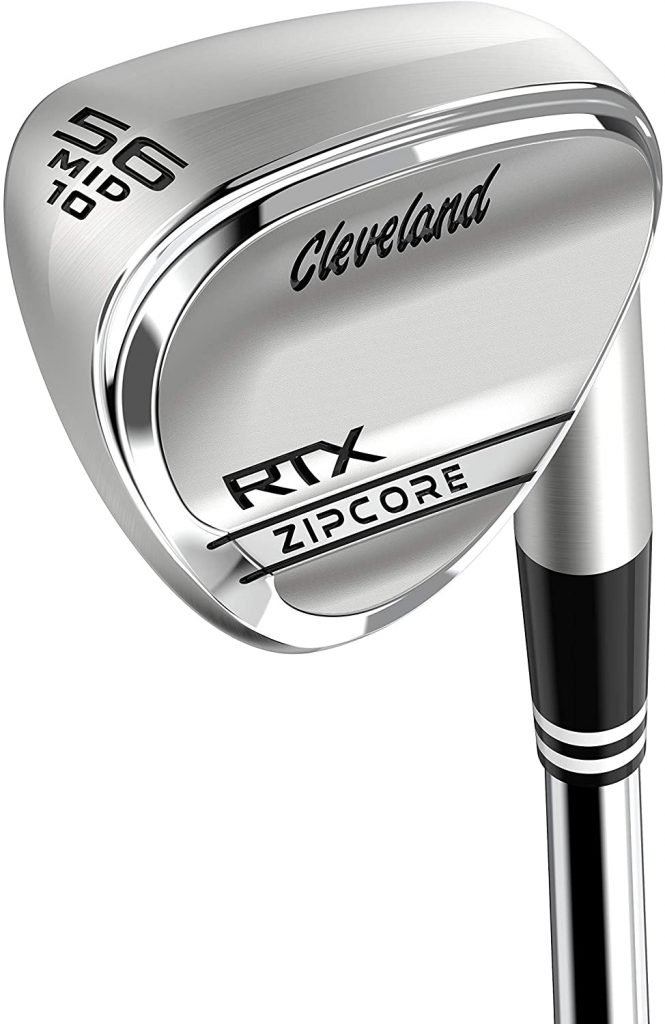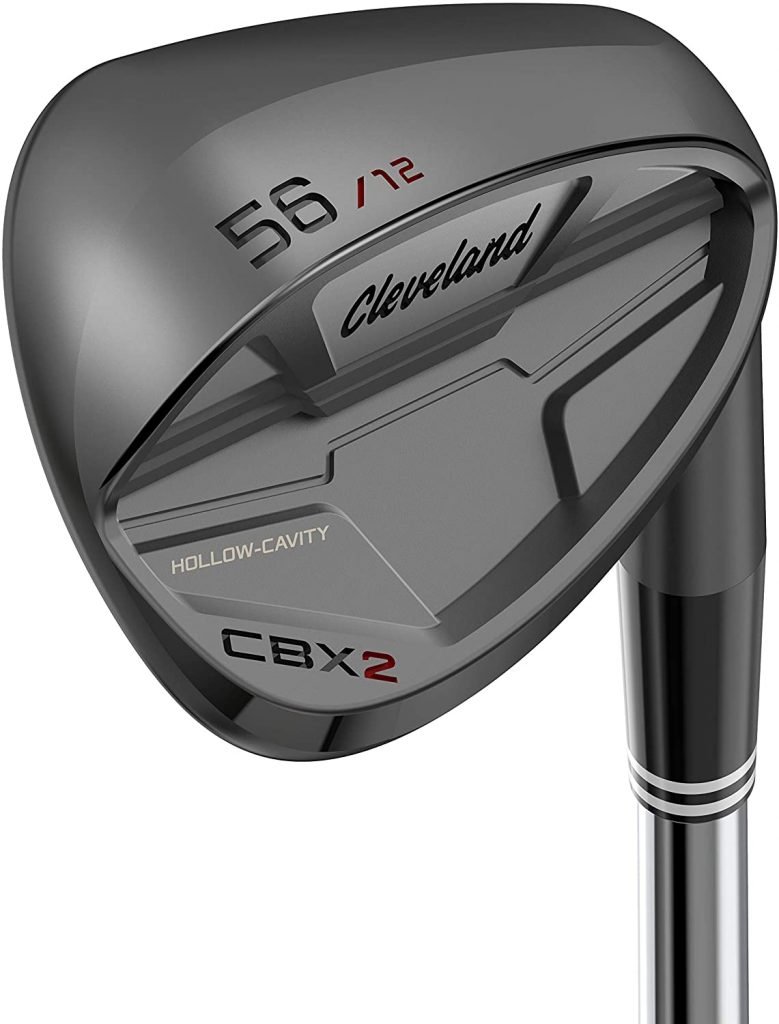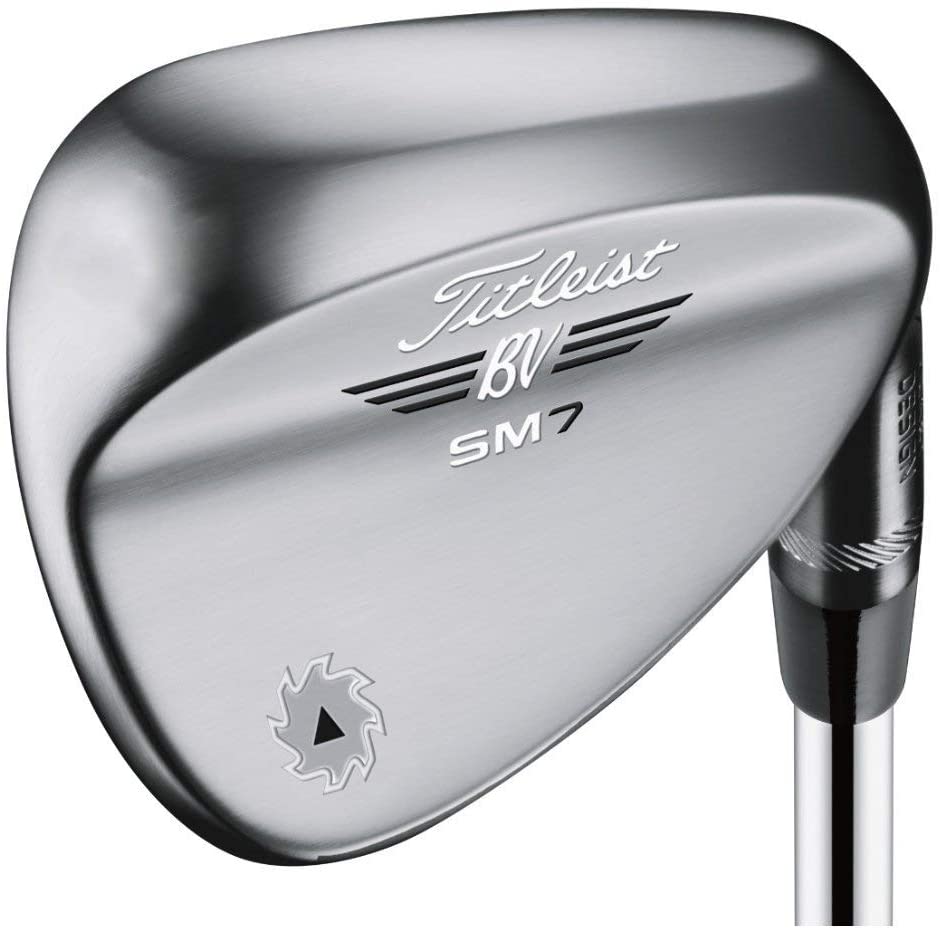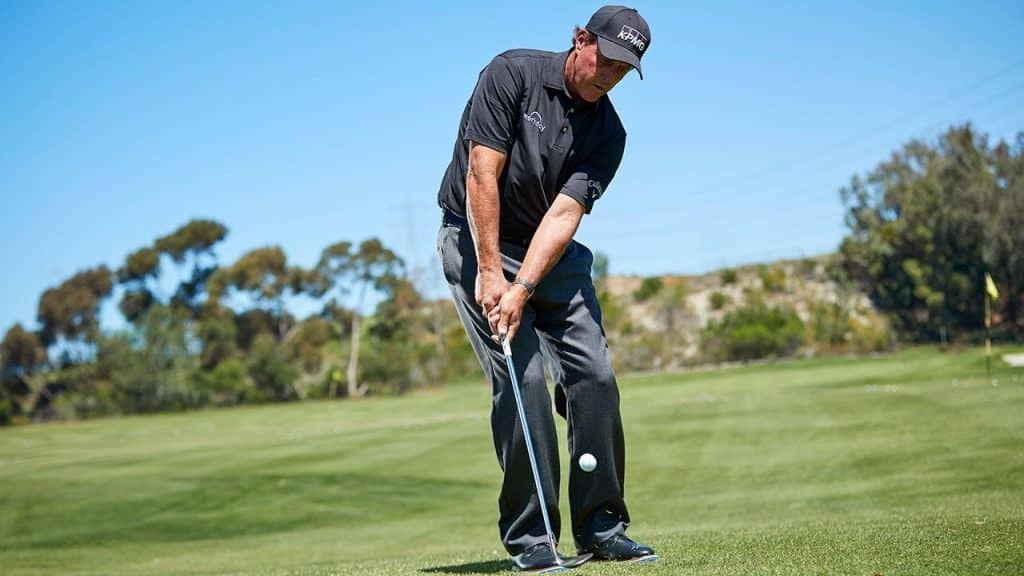There isn’t a golfer out there who hasn’t heard the saying “drive for show, putt for dough”.
And yes, while good putting is crucial to shooting low scores, if missed greens become two-foot taps in because of an elite short game, putting may become a remarkably easy part of the game.
Chipping is vital for scrambling pars and bogeys after wayward drives, or relieving pressure on the tee when you develop the short game confidence to know you won’t need to pencil in four shots to the hole within 30 yards.
But all of us at some point in our golfing journey have suffered through the ‘chipping yips’ where nothing seems to work, no matter how hard we try.
It leaves you asking yourself: Why can’t I chip?
If you can’t chip, it probably comes down to one of four reasons: practice, acceleration, weight and stance. If you never practice your chipping then you will struggle, and trying to chip with the ball dead centre in your stance will also cause problems. Additionally, decelerating through a chip is a recipe for thin shots, as is having your weight on the back foot.
Practice and make some small changes to your technique and you may well be stuffing it close in a matter of weeks.
Keep reading to learn what causes the chipping yips, how to cure them and how you can improve your performance around the greens.
Table of contents
Main reasons why you can’t chip
When you’re struggling with chipping, it can seem like there’s no light at the end of the tunnel.
But, I can guarantee there is: all you need to do is figure out what you’re doing wrong, and how to correct it. Luckily for you, that’s exactly what this article is about.
Let’s take a look in more detail at the four main reasons why you can’t chip, and what you can do to improve.
#1 You don’t accelerate through the ball
Chipping is about tempo and feel.
You can have all the advice in the world, but if you don’t have the mental conviction to be aggressive through the ball, you’ll never be a good chipper.
Many people don’t realise that the speed you strike the ball with should not be the determining factor to how far your chip or pitch goes.
If your chip is short, lessen your backswing. If your chip is longer, lengthen your backswing.
The thing that shouldn’t change is your speed through the ball: it should be controlled, but aggressive, and the clubhead should be at its fastest at the point you contact the ball.
Your backswing should be smooth and slow (not slow-motion) before quickening through the point of contact.
Again, a faster or slower clubhead is not what should control distance – the length of backswing is how you make the ball go further if you need to fly it a greater distance.
Practice this speed through the ball and you’ll be amazed to find out that swinging faster avoids the dreaded shot out of the teeth and drastically improves your contact.
Check out the detailed video below from Top Speed Golf on the differences between chipping and pitching:
#2 You don’t practice
Practice makes perfect, right? So why the hell do you rue your terrible chipping but bash 100 balls with driver every range session?
While clubs like driver and irons are massively dependent on technique to make contact that will deliver optimum results, chipping, so long as you have some basic technique, is largely dependent on feel.
If you work with a pro, you should only ever need one chipping lesson to establish a set up and technique.
Then comes the hard part: practice, practice, practice (we detail how much practice you should be doing each week in another article I recommend you read).
Many a golfing guru will talk about the importance of spending 70 per cent of your time practicing inside 100 yards, chipping obviously being a part of this.
Even if you preserve half of your 100-ball bucket for the short game area, you’ll be developing the touch, feel and muscle memory that’s crucial to chipping success.
The beauty of chipping is that it is also, along with putting, part of the game that you can practice at home, no matter how little room in your yard (or even house!).
We recommend buying a small piece of artificial turf to provide a consistent chipping surface, experimenting with different backswings and acceleration to fly the ball different distances (check out our article on golf mats for an idea on the best ones).
Place some objects or colored golf balls on your lawn at different distances and see how close you can get to each one.
Obstacles such as pets, children and neighbours just add to the pressure – use them to help create the high stakes conditions of tournament play.
#3 You set-up incorrectly
Picture this.
Your ball is resting about five metres off the green. The dance floor sits a foot or two above your ball, so you need to loft it up there a touch. You wander up to the ball, settle over it with it square between your feet, take a swing and duff it.
Why? You thought your tempo was good and you accelerated through the ball? Yet, the result sucked.
When taking your set-up to hit a chip, the ball should be towards the front or back of your stance, but never in the middle.
Bringing the ball forward in your stance will promote it popping up in the air, while a back foot positioning will help keep the ball low.
A mid-stance ball position makes it hard to shift weight appropriately – I’ll discuss weight next – meaning you’re more likely to bottom your swing out at an inconsistent point.
In addition to ball position, how open or closed your stance is will affect your chipping effectiveness.
All chipping should be performed with an open stance – slightly open for less lofted chips, increasing as you add more loft to your ball flight.
If you are chipping with a wedge (which you should be unless you’re playing a bump and run) you’ll be using at least 50 degrees of loft unless you are closing the clubface.
The more loft you add, the more the club face will point away to the right (for a right hander).
If you use a square stance, then your shots will keep shooting off to the right.
Opening the stance – pointing your feet to the left – helps to counter this right bias, meaning your chips will come out straight at their target.
#4 Your weight is not on the front foot
Most standard golf shots require fairly even weight, around a 50-50 split on each foot.
When chipping, it is crucial that more weight goes onto the front foot, as much as 70 per cent of your total bodyweight.
Many people still subscribe to the misguided reasoning that an upward strike is needed to get the ball into the air, especially if needing to fly a chip over a bunker or onto an elevated green.
Good chipping technique requires much the opposite: weight on the front foot to promote a downward strike, allowing the loft of the club to pop the ball up into the air.
Unfortunately, our mind will find every way possible to counteract our efforts to stop bad habits, so the fear of hitting it fat leads to deceleration through the ball and often a dreaded thinned shot instead.
Developing a pre-shot routine and taking a practice swing is one way the best golfers in the world develop consistency, and the ability to pull off great chip shots under pressure.
Practice chipping with your weight forward and conviction through the stroke, and you’ll take ball then ground, resulting in a clean chip that grips at the hole.
Watch the video below to learn how to chip off tight lies:
What causes the chipping yips?
Chipping yips are caused by a lack of confidence or belief that you’re going to play a good shot. Golfers will often think about the worst case scenario (such as hitting a fat or thin shot) and this negative mindset leads to a poor result. Chipping yips can manifest in a number of ways including decelerating through the shot and trying to guide it onto the green (often causing a poor strike), or lifting of the head resulting in a less-than-desirable result.
How do you cure chipping yips?
The best way to cure chipping yips is practice regularly and approach each shot positively, believing you’re going to hit a good shot. Focusing on the core principles of good chipping – accelerating through the ball, keeping your weight forward, and positioning the ball either on your front or back foot – will soon cure your chipping yips over time.
What wedges should I use to chip?
Selecting which wedge to chip with depends on what shot you’re trying to play. A pitching wedge or 52 degree gap wedge are both great for hitting low chips that run out more, whereas a 56, 60 or 64 degree sand or lob wedge is ideal for hitting lofted chips. Bump and run chips are best played using a 7-iron or 8-iron.
It’s no surprise that the pros often have three or even four wedges in their bags, as different clubs provide different options and unlock multiple shot types.
Here are some of the best wedges out there that money can buy for all abilities and price brackets.
Cleveland RTX Zipcore
The new offering from wedge royalty Cleveland (and the newest addition to my bag in 54 and 60 degree lofts), the Cleveland RTX Zipcore are superb wedges.
I’ve gained a lot of confidence around the greens since using them, as they feel great and impart heaps of spin on the ball, allowing me to attack the pin with confidence knowing the ball will check and stop quickly.

Features:
- The ZipCore design shifts the centre of gravity, adding spin, enhancing control and boosting consistency.
- UltiZip Grooves that are deeper, sharper and narrower. They bite harder, channel more debris and promote more groove contact per shot.
- Blasted with heat treatment these wedges are durable, resisting wear and tear round after round.
- Tour issue Dynamic Gold wedge shaft for stability, control and consistency.
LAZRUS Premium Forged Golf Wedge Set
For a beginning golfer or someone on a budget, less than $200 AUD will grab you a set of three LAZRUS Premium Forged wedges: 52, 56 and 60 degree.

Check out the LAZRUS Premium Forged wedges on Amazon
Features:
- A full set of wedges forged with a milled face. Suitable for all skill levels.
- Made by the same people who forge the market’s ‘best’ for a quarter the price!
- Great value for money that will perform to the same level as more expensive wedges on the market.
Cleveland CBX2
Once again, Cleveland are at the top of their wedge game with one of the most forgiving offerings on the market.
The Cleveland CBX2 has high bounce and a V-shaped sole promoting forgiving turf-club interaction to reward heavy shots better than just about any wedge.

Features:
- Hollow-cavity design offering more forgiveness at impact
- Three different sole grinds deliver more versatility on the course
- Amazing feel thanks to a Gelback TPU that reduces vibration
- Rotex face delivering sharp grooves and aggressive face milling for maximum spin and control
Titleist SM7
The Titleist SM7 is at the higher end of the price scale but offers superb quality and a range of colors for the golfer who sees great importance in the aesthetics of their gear.

Features:
- Maximum spin, control and consistency through spin milled grooves
- Progressive centre of gravity, optimised for each loft, leading to improved distance control and tighter shot dispersion
- Ultimate versatility for any level of player in any conditions
- A range of finishes including tour chrome, brushed steel and jet black
Final message
There’s no doubt that chipping is an integral part of the game and anxiety over the ball can lead to nightmare thin shots into bunkers or the embarrassing duff.
If you are afraid of chipping and find yourself reverting to a 9-iron bump and run, it may be time to upgrade your gear and hit the short game area, finding that touch and feel to start stuffing them close.
Work on accelerating through contact, shifting weight forward and playing the ball off the front or back foot and you’ll see a spike in up-and-downs, wiping strokes off your scores in no time.
- TaylorMade SIM2 Max Driver vs M4 Driver: Worth it in 2024? - April 15, 2024
- 3 Ways to Win the Mental Game with the Bridgestone Mindset Golf Ball - March 29, 2024
- TaylorMade SIM Max & SIM2 Max Drivers: Are they Still Relevant in 2024? - March 9, 2024



